Riley's Hoist
Introduction
Text-to-speech Audio
During the cutover of Wisconsin's Northwoods, both river drive and and railroad hoists brought millions of board feet of lumber to market each year. Along the Manitowish chain of lakes, loggers used steamboats to move rafts of brailed logs to Riley's Hoist. The lakes became much larger as water was raised by as much as 16 feet to facilitate steamboat operations up creeks and into bays to retrieve logs decked along the shorelines. Riley occupied the old Mississippi River Logging Camp at Rest Lake Dam to house his lumnerment and conduct operations.
Today, Riley's Hoist is on state forest land and can be accessed from Serbin Park by following the shoreline west. Private property marks the end of the Riley Hoist area and should not be entered. It is illegal to dig, metal detect, or take artifacts on public lands without a permit from the DNR Archaeologist and State Archaeologist. Riley's Hoist is a cultural site recorded in the Archeological Site Index and protected by state law. Observing, taking photos and sharing stories around this exciting destination are encouraged.
When visiting the site, do not contribute to the bank erosion by walking down to the water or climbing the hill. Just stay on the extra wide railroad grade and observe. Riley's Hoist is about 120 years old and visitors being good stewards will ensure others can enjoy this unique cultural destination for generations to come.
Images
Western Vilas county locomotive with logs on rail cars
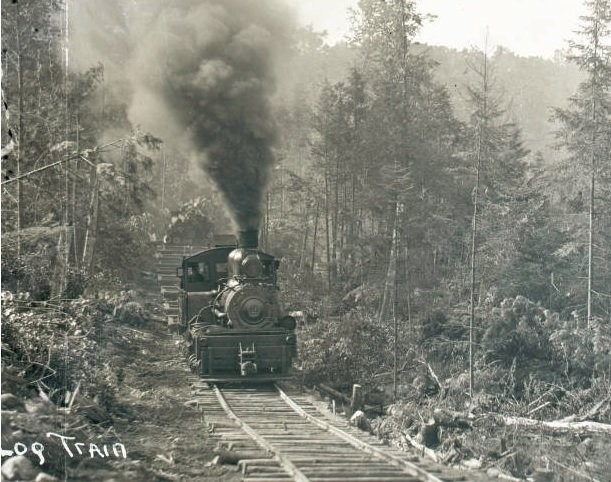
Yellow arrow marks Riley Hoist Site

Steamboat on Manitowish Chain for hauling logs to railroad hoists and Rest Lake Dam of river drives
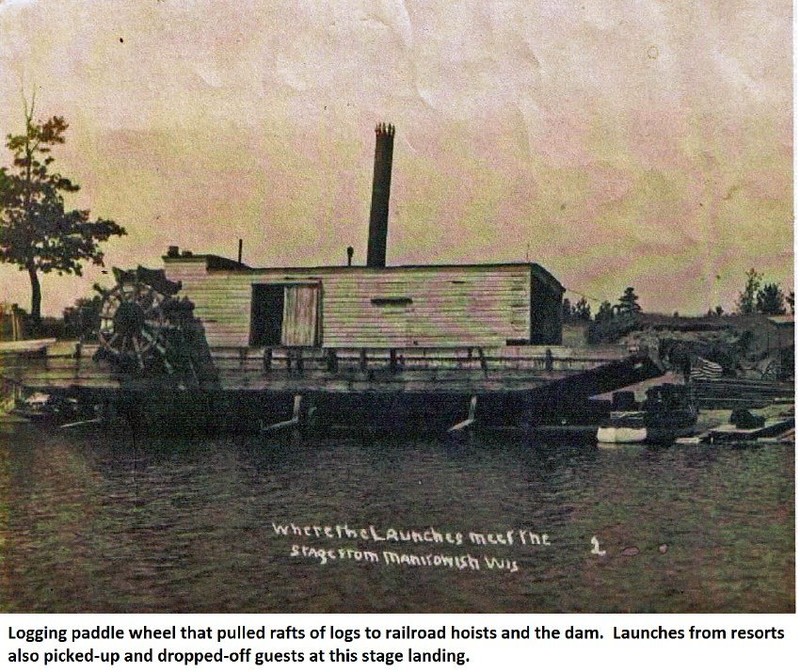
Little Star Lake railroad hoist that was similar to the Riley Hoist
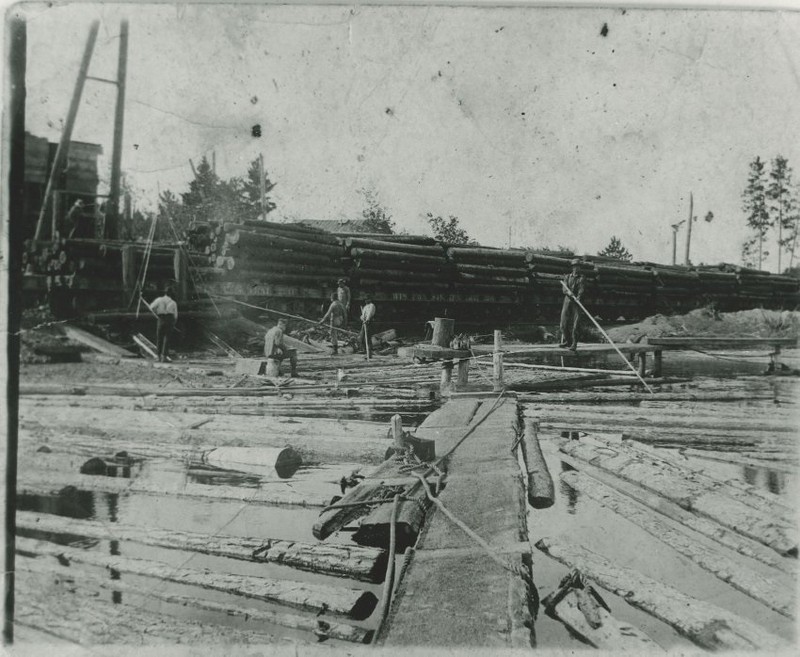
1937 aerial photo of Riley Hoist site
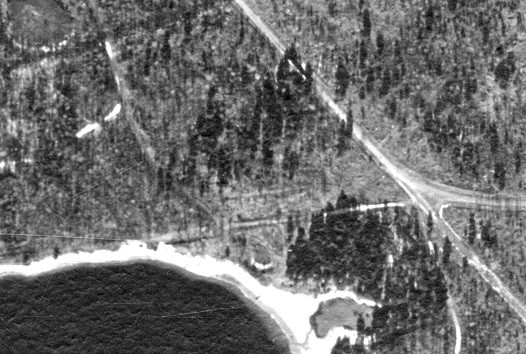
Brailing logs on the Manitowish Chain
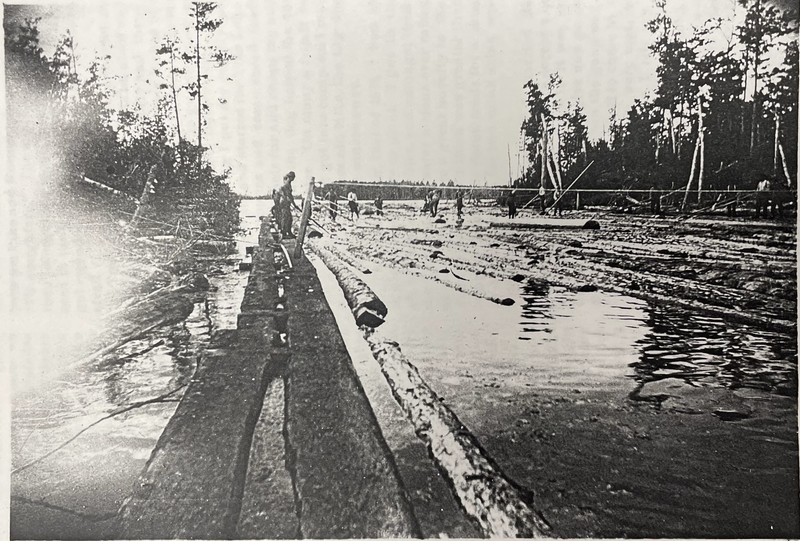
Riley at Rest Lake Dam Camp

Riley begins work in early 1905

Backstory and Context
Text-to-speech Audio
At the turn of the 20th century, logging interests were racing to the Manitowish Waters region to harvest some of the last large stands of timber in the Northwoods. In 1905, south of the Manitowish Waters chain of lakes, the Chicago Northwestern railroad ran lines to both Winchester's Turtle Lake Lumber Company and Winegar's (Presque Isle) Vilas Lumber Company. In 1905, north of the Manitowish Waters chain, the Milwaukee Road railroad pushed to Rest Lake's Riley Hoist and the logging community and mill of Busswell on Papoose Lake. The rail line to Rest Lake was a spur operated by the Yawkey-Bissell Lumber Company, which also charged other loggers like Brooks and Ross Logging Company to use the rail.
Riley was a former sheriff from Eau Claire and moved to Rhinelander to explored new logging ventures across the Northwoods. His work on Rest Lake began as soon as railroad construction was completed in 1905. Working with the Brooks and Ross Logging Company, Riley operated from the river drive camp at Rest Lake Dam (Pea Patch today) that was being phased out as Frederick Weyerhaeuser was shifting operations to Washington State. With most of the river drive white pine gone, loggers like Brooks and Ross were concentrating on hardwoods, softwoods and red pine. Red pine was plentiful and profitable, and the competing hoists on Rest Lake and Little Star Lake emerged as critical staging areas for railroads. Red pine did float, but not nearly as well as white pine. Pioneers like George LaPorte suggested that millions of feet of lost timber remained on the bottom of the Manitowish chain because loggers tried to float logs that were not suitable for water navigation.
In the early days, activities around the Riley Hoist were intense. Setting pylons into the lake bed, creating loading docks to receive the brailed rafts of logs while dealing with mechanics of the hoist and trains had to be challenging. The newly created Wisconsin Forestry Department rated the local railroad engines as in poor or fair condition. Just before the Riley Hoist strikes the shore of Rest Lake, the rail bed expands in size with enough room to accommodate two sets of tracks. By backing up the train engine and rail cars, hoist operators could move empty and loaded rail cars with the additional rail space near the lake shore. Deadlines, equipment failures, mishaps and other challenges pushed loggers to move logs at a frenetic pace. Historian Paul Brenner reported that the tugs ran day and night to keep pace with schedules and save timber that quickly became waterlogged.
Other regional logging companies using the Milwaukee Road railroad lines near Riley's Hoist included the Stange Lumber Company operating along Papoose Creek and Buswell Lumber Company on Papoose Lake. In 1905, Buswell was a larger Northwoods community of several hundred people that had a sawmill to complement their logging operations. Sadly, in 1910, the community of Buswell was destroyed by one of the forest fires that plagued the Northwoods during the cutover era.
Those wishing to observe Riley Hoist’s remaining Lake bed pylons may consider a visit to the site in mid October-April when water levels are lowered three feet or more.
Sources
Montreal River Miner and Iron County Republican (Hurley, Wisconsin). Thursday, January 25, 1906, page 8.
Montreal River Miner and Iron County Republican (Hurley, Wisconsin). Friday, November 3, 1905, page 8.
Montreal River Miner and Iron County Republican (Hurley, Wisconsin). Friday, November 17, 1905, page 8.
http://images.library.wisc.edu/WI/EFacs/USAIN/RSF/RSF191112/reference/wi.rsf191112.i0009.pdf. Wisconsin. State Board of Forestry / Report of the state forester of Wisconsin for 1911 and 1912. State of Wisconsin Collection. p. 43. Retrieved 2-7-2018
http://mwlibrary.blogspot.com/search/label/logging. Looking back at the logging years. Koller Library. Michael J. Dunn, III. Retrieved 1-26-2018.
http://mwlibrary.blogspot.com/search/label/logging. Paul Brenner Interview, continued. Koller Library. Retrieved 1-26-2018.
http://content.wisconsinhistory.org/cdm/singleitem/collection/maps/id/2786/rec/9. Papoose Lake. James P. Kaysen. Wisconsin Historical Society. Image # unknown. Retrieved 1-26-2018.
http://sassmaster.tripod.com/vilas.html. Wisconsin Logging Railroads. Vilas County. Timothy Sasse. Retrieved 1-26-2018.
Manitowish Waters Historical Society
Manitowish Waters Historical Society
Wisconsin Office of the State
Chippewa Valley Museum
Montreal River Miner and Iron County Republican (Hurley, Wisconsin) · 26 Jan 1906, Fri · Page 8
Montreal River Miner and Iron County Republican (Hurley, Wisconsin) · 6 Apr 1906, Fri · Page 8
